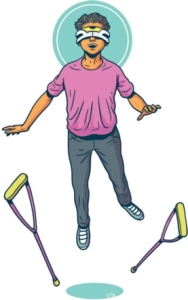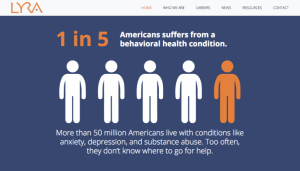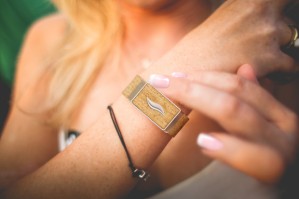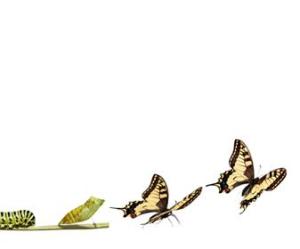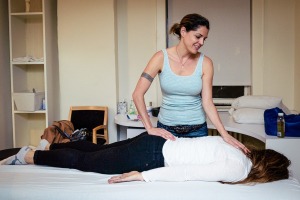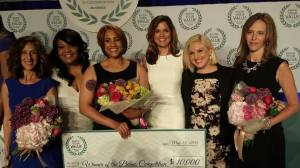(Originally Published in ReVision Journal. March 2009)

Cultural myths from around the world describe a time when only women knew the secrets of life and death, and therefore they alone could practice the magical art of healing (Achterberg, 1991, p.1).
The presence and influence of women healers ranges from the celebrated to the controversial. Among scholars of Goddess Theology and Women’s Spirituality, woman as healer is a tradition that spans several thousand years, stretching far back into prehistory when women were honored for their healing abilities (Achterberg, 1991; Gadon, 1989; Noble, 1991). Several universities including the California Institute of Integral Studies (CIIS) and the New College of California offer programs dedicated to the study of women’s spirituality which incorporates female modes and powers of healing and embodied healing methods. Students of these and other informal groups celebrate the compassionate, nurturing and intuitive contribution that women make to health and medicine.
There is evidence of communities of priestesses and women’s councils that existed for millennia in Old Europe and other places (Gimbutas, 2001). Almost all archeological sites in Italy, the Balkins and Central Europe, contain figurines etched with sacred symbols representing the sacred feminine. These objects can also be found in Asia Minor, the Near East and to a lesser extent in Western and Northern Europe. (Achterberg, 1991; Eisler, 1987; Gimbutas, 2001; Noble, 1991; Stone, 1976).
Women practiced midwifery and herbology during the eleventh, twelfth and thirteenth centuries. While the early part of the Middle Ages were times of excitement and diversity for women healers, the fourteenth through eighteenth centuries saw an orchestrated and thorough campaign to stamp out the woman healer (Brooke, 1997). During this time of calamity, crime, crop failures and illness, women and witchcraft were blamed for the disasters of the earth. The newly established medical professionals and the Church tried to establish a monopoly on the healing professions claiming that women healers were “idiots who gathered herbs and practiced religious nonsense” (Achterberg, 1990, p. 78). As a result of this unfortunate turn of events, women were forbidden to practice medicine. They were systematically tortured and burned by the hundreds and thousands for practicing healing arts. One medieval scholar estimates that more than one million women and healers were executed for the crime of helping other women (Robbins, 1998).
In the nineteenth century there were long and vicious battles to prevent women from entering medical school because medical education was considered unsuited to women (Brooke, 1997; Remen, Blau, & Hively, 1980). However, women were successful in re‐entering the health care system and eighty percent of the 12 million workers in the health care system today are women (CDC‐NIOSH, 2001). Women have been working in free clinics, public health, geriatrics, preventative and complementary medicine and running their own hospitals (Brooke, 1997). In addition to practicing traditional medicine, women are working as botanical healers, midwives, chiropractors, homeopaths and an assortment of other lay healers (WHCCAM, 2002).
Although there is no research to support the theory that the public perceives women healers as respected practitioners today, the growing interest in Complementary and Alternative Medicine (CAM) suggests that the public perception of women healers is a positive one. More than $27 billion is spent annually on CAM (Eisenberg, Davis,, Ettner, et al., 1998) and, according to a 2004 nationwide government survey, 36 percent of U.S. adults aged 18 years and over use some form of CAM (Barnes, Powell‐Griner, McFann, & Nahin, 2002).
The proportion of CAM providers who are female ranges from 30% to 85% depending on the type of practice. More women than men practiced massage therapy (85 percent) and acupuncture and naturopathy (almost 60 percent), but women represented only a minority of chiropractors (about 25 percent). In the United States, there are approximately 60,000 chiropractors, 100,000 massage therapists, 1300 naturopathic physicians, 3000 acupuncture physicians and an additional 11,000 non‐ physician acupuncturists. This population of 175,300 practitioners (62% female) represents a partial sample of the healing arts community (Eisenberg, Kessler, Van Rompay, Kaptchuk, Wilkey, Appel, & Davis, 2001).
THE STUDY
Overview
A combination of narrative analysis and life story was used to gather information about the experiences of growth and transformation among five women who maintained a successful practice in the healing arts for ten or more years. The number ten was identified because it indicates a substantial amount of experience and a degree of maturity. A successful practice was important because the study called for the wisdom of accomplished, competent and effective healers. Life experience was a critical component for this research because it explores the common milestones that span a lifetime of practice.
I conducted five interviews between November and December of 2004. The five interviews were conducted face‐to‐face or over the telephone and were recorded for the purpose of creating transcripts.
After the third interview, I began to notice several similarities in the stories. For example, four out of five women had experienced a life threatening illness. The details of the stories, of course, were different. Two of the women suffered from Breast Cancer while the third had Pelvic Inflammatory Disease. After the fifth interview, I felt confident that I had reached data saturation and I had collected enough information for the purpose of the study.
Although it was a narrative research study, I did not use the structural or linguistic analysis often used in narrative analysis (Reissman, 1993). Instead, I used thematic analysis, a form of content analysis that involves searching for themes in the data. The first step in this process involved exploring the women’s life stories for information that revealed the common experiences of growth and transformation. I began by reading and re‐reading the transcripts while listening to the audio recording. Each successive reading took me deeper into the life story of the women and allowed me to hear things that I didn’t hear in the previous sittings. This also helped me to better understand the chronology of the life story since all the women told their stories in a nonlinear style.
After studying the text for several months, six themes were developed: Importance of a Support Network, Ongoing Learning and Self‐transformation, Nature as a Teacher and Tool for Healing, Energy as a Universal Language, Integral Approach to Healing, and Purpose‐driven Life. Once the themes were identified, I proceeded to weave the analysis of the life stories with the current literature and create a cultural, historical and social context for the themes identified in the life stories. This process of working with each theme to create a clear and coherent presentation lasted about 18 months and went through several transformations as the data became more integrated into my thinking.
THE THEMES
Importance of a Support Network
Make sure you plan plenty of support, so you can totally fall apart, totally be in the mess and in the experience of pain. Because we have to go there in order to get through to the other side … All good teachers say that you can only teach what you know. And you can only take people as far as you’ve gone. (Participant comment)
My analysis of the women’s life stories demonstrated that throughout the process of growth and transformation, it was crucial to have a support system in place. As the women developed their practice, engaged in personal growth and worked with patients, it was their support system that helped them to clarity about their lives, manage their transformational development, and do self‐healing. The support network also prevented them from feeling lonely, overwhelmed or disconnected.
The women healers in the study realize that they have to delve into their own self‐healing in order to help others so they plan lots of support during the transformational process. Their support network allows them to heal and grow which allows them to help others do the same. The women can support their patients because they have a support network supporting them. Without a support network, they would not have been able to go through the necessary pain and growth to develop the skills needed to help others meet those same challenges.
The women described many challenges that required the use of their support system including running a business, developing their practice, surviving illness and disease. Gathering with other healers, spending time with mentors, and sharing experiences with friends are some of the ways that the women accessed their support network. The types of support that composed their support network included teachers, mentors, family friends and inner or spiritual guidance. The support network was crucial in providing the women with companionship, resources, inspiration, guidance, connection, and stability.
The current research on health care reports that social relationships serve important social, psychological, and behavioral functions across the lifespan (Berkowitz, 2002; Ornish, 2006; Uchino, Cacioppo & Kiecolt‐Glaser, 1996). A review of 81 studies revealed that social support had beneficial effects on aspects of the cardiovascular, endocrine, and immune systems (Uchino, Cacioppo & Kiecolt‐ Glaser, 1996). Scientists as UCLA discovered that women respond to stress with a cascade of brain chemicals that cause them to make and maintain friendships with other women (Berkowitz, 2002). When the hormone oxytocin is released as part of the stress responses in a woman, it buffers the fight or flight response and encourages her to gather with other women instead. This leads to a release of more oxytocin which further counters stress and produces a calming effect. Gathering with others also reduces the risk of disease, death, and physical impairments. Not having close friends or confidants is as detrimental to health as smoking or carrying extra weight (Berkowitz, 2002).
In addition to improving health, relationships between people also foster creative activity. Although creative individuals are often thought of as working in isolation, much of their intelligence and creativity results from interaction and collaboration with other individuals (Csikszentmihalyi, 1996). Since most healers work as independent contractors, they have to be creative in finding ways to meet other healthcare professionals. Some of the things I have done to stay involved with other healers include working part‐time at wellness centers and doctor’s offices, volunteering at health fairs, creating healing groups and practice groups, seeking out mentors in the field and connecting with pre‐ established networks of healers such as Licensing Boards or Membership Associations. I also encourage my students to plan a good support system. I recommend that they participate in learning communities and mentorship programs during the course of their studies so that they can experience the necessary support framework for their growth and development. In addition, I encourage them to build and maintain these systems when they graduate so they have the necessary resources for success when they start their healing practice.
Ongoing Learning and Self‐Transformation
I’d say to my friends, “I feel I’ve completed a cycle, and I don’t know what it is, but I’ve completed it.” And then my life would take off in a whole new different direction … like you have with certain seasons, you have a decay; so you’ve completed that, and then you have a rebirth … that created more energy for me to be available to do new things. (Participant Comment)
The women described their ongoing learning and self‐transformation as a tool that provided the necessary knowledge to do self‐healing and healing with their clients. Some of the things they learned include learning to be still and listen deeply, learning to see the interconnectedness of everything, learning a common language based on energy, learning diverse approaches to healing from different cultures and disciplines, and learning to integrate all their experience to teach and empower others. They also came to interpret their experience of ongoing learning and self‐transformation as a cyclical process of life‐death‐rebirth—a metaphor for the transformation of all things in nature.
For the women in the study, formal learning occurred in classrooms, universities, workshops and trainings. One woman spent 20 years meditating and studying alone in her home. Another woman has 5000 hours of training in bodywork and energy work modalities. A third woman has a formal education as a nurse and a forth is a licensed acupuncturist. Each woman followed a different path of education but they all experienced a similar type of learning and development. Mentors helped the women by giving them clarity about the concepts they were learning and frame it in a way that made sense. One woman said that her mentor gave her a few skeleton concepts that allowed her to “hang it together” and also gave her “clarity about what’s going on.” Throughout the process of change, the women became more open and aware, learned to see the interconnectedness of everything, and empowered others to self‐heal. They saw adversity as an opportunity rather than a curse and used it to develop awareness and skills that could be used to educate and heal others.
Patients presented an opportunity for learning because each treatment was unique and challenging in its own way and sometimes the women would run into situations that were unfamiliar. Encountering unfamiliar situations motivated the women to continue learning so that they could heal the patient. Personal illnesses and challenges presented a unique opportunity for ongoing learning and self‐transformation because it enabled the women to learn about their own strength and authenticity. It also gave them a deeper understanding of the challenges that their patients face.
Becoming a healer requires the ability to grow beyond cultural conditioning and the conventional medicine paradigm to embrace a new worldview. It requires openness to new ideas, ongoing learning and self‐transformation, and the ability to integrate and communicate new insights and information to patients. In my own teaching, I address all aspects of healing (physiological, psychological, transpersonal, cultural, etc.) and all aspects of the person (physical, mental, emotional and spiritual). I explore the personal process of transformation in order to better prepare the student healer for the transformative learning experience. I also include discussions about the different worldviews and paradigms that accompany these varied approaches to healing in the curriculum. It is important to include curriculum about the historical and cultural dimensions of healing so that the healer understands the general context and personal context of her work. This awareness will enable her to be grounded in her profession and communicate about healing intelligently and effectively.
To receive a license or national certification in a healing modality, the practitioner may need as little as a high school diploma and 500 hours of training. While this serves as a good foundation for her work, the successful healer will want to acquire additional education which investigates the mind, body, pathology, spirituality, and all aspects of healing. In my practice, I have completed over 1000 hours of training in holistic modalities as well as a Bachelors degree in Psychology, a Masters degree in Education and a Doctorate on Women Healers. The more a healer learns, the more tools she will have to use in the treatment room.
Nature as a Teacher and Tool for Healing
I have a lot of tools … but you don’t really need any. You just have to learn how to listen deeply. And you can never do that if you can’t hear yourself and you don’t have some kind of practice that allows you to be quiet and still … You can’t have activity without stillness because you won’t really be there … I think we can’t really have an experience fully without being somehow connected to stillness. (Participant comment)
For more than 6,000 years, the concept that the body, mind and spirit are intertwined with nature has been present in the Healing Arts. The concept of elements can be found in many cultures including the Far East, ancient Greece and indigenous cultures around the world. Even the father of Western Medicine, Hippocrates described the human body in terms of the four elements: yellow bile (Fire), black bile (Earth), blood (Air), and phlegm (Water) (Hippocrene Books, 1931). In the study, nature represents people, plants, animals, the environment, the body and the natural elements that are present in everything. For the women in the study, their perception of nature was consistent with the role that nature plays in the Healing Arts. Nature was connected to the women’s experience of body, listening, healing and teaching in a powerful way.
The women in the study had many extraordinary experiences and learned several significant lessons from nature. They connected to the energy of trees and animals, felt the awesome power of nature’s creativity and beauty and learned to quiet their minds and listen deeply as a result of their interaction with nature. One of the women chose to work directly with animals and the environment as a means to teach people about the inter‐relationship between humans, animals and health. Another woman experienced deep healing after living alone on a mountain for an extended period of time. Each woman used their body and the skills they developed in nature as a teacher and tool for healing. The women in the study appreciate nature as the ultimate teacher and a framework for understanding the healing process.
Several researchers from diverse backgrounds including science, anthropology, philosophy and metaphysics have written about the sacred and intelligent power of nature (Abram, 1996; Tompkins and Bird, 1989; Chopra, 1989; Goodenough, 1998; Roads, 1990; Sahtouris, 2000). Chopra (1989) says each cell of the body harnesses the power and intelligence of nature. Abram (1996) says that the world is alive, awake and aware and each ecology has its own psyche. Within that ecology, each thing has its own unique mind or imagination and an active agency and power (Abram, 1996). Some authors have deeply explored the physical, emotional and spiritual relations between plants and people (Tompkins and Bird, 1989; Roads, 1990) and others say we are called to acknowledge our dependency on the web of life both for our subsistence and for our countless aesthetic experiences (Goodenough, 1998; Sartouris, 2000).
Because nature serves as a foundation for many healing modalities as well as the practice of deep listening, I recommend that healers spend time meditating and reflecting in nature and practicing techniques to become more present and grounded in the body. We have many options for deepening our relationship with nature including yoga, martial arts, visiting sacred sites, and simple activities such as hiking or camping. I encourage my students to travel and work in different environments to increase their awareness of the ways in which diverse environments affect the healing process. Personally, I have traveled to multiple locations in North America, South America, Asia, Africa, and Europe to study different cultural approaches to healing. I also encourage my students to participate in experiential nature‐based exercises and learn about nature’s healing resources such as herbs, hydrotherapy (mineral springs, salt water), and so on.
Integral Approach to Healing
What I learned was that Taoism and CranioSacral are the same thing, because it’s the same system that’s utilized. The CranioSacral practitioners and the Shamanistic approach and the Tao are the same thing … Nobody kind of sat down … to make one language … connecting the same systems. And luckily I studied the Western, the CranioSacral and acupuncture, so I really get that. (Participant comment)
The literature describes the ideal integral healer as someone who is transformed, deeply changed, healed and whole, expert in the worlds healing traditions, expanded in consciousness, uses personal development and self‐care and a holistic lens to view the world (Dasher, 1996; Khanna, 2004; Wilber 2004). The women in the study match the description in the literature because they use multiple healing traditions to treat patients, are expanded in consciousness, are committed to self‐development, and use multiple ways of knowing and a holistic lens to view the world. In addition to the attributes of an integrally informed health‐care practitioner, their principles also match the principles of integrative medicine including a partnership relationship with patients, openness to new paradigms, and natural healing‐oriented interventions.
Although they did not label themselves as integral healers, the women in the study talked extensively about their commitment to self‐development which led to the characteristics of an integral approach to healing including openness, expansiveness, and wholeness. The women used many tools for self‐development such as meditation, yoga, martial arts, workshops, fasting, retreats, spending time in nature, and so on. At the same time that they were working on themselves to become more healed and whole, the women in the study were also being trained in multiple healing modalities. One woman integrated many bodywork modalities together including Shiatsu and CranioSacral Therapy to treat the physical, mental and emotional aspects of her patients. Another woman studied everything from acupuncture to channeling to transcendental meditation to build her holistic approach to healing. Other modalities that were used by one or more of the women include Healing Touch, Quantum Touch, Breema, Shamanic Journeying, Hatun Karpey, and Energy Medicine.
The concept of interconnectedness between nature, people and healing is the foundation of healing arts and the holistic framework. The women in the study developed a holistic lens to view the world as they integrated learning from diverse cultures and healing modalities and participated in their own relationship with nature. This holistic framework is essential for an integral approach to healing because the integral perspective requires the practitioner to see how nature, people, lifestyle and transformation are inseparable. This perception allows them to bring their whole self into practice and use a whole‐person approach to healing.
In my own teaching work, I aim to help students combine self‐knowledge with knowledge about health and medicine. I recommend that they develop their consciousness, intuition, and creativity and self‐awareness. The curriculum that I have taught includes courses in anatomy, physiology, psychology, business practices, ethics, nutrition, fitness, yoga, meditation, martial arts, Traditional Chinese Medicine, Ayurvedic Medicine, CAM, shamanic healing, energy medicine, pathologies, contraindications, and so on. I attend conferences such as the North American Research Conference on Complementary and Integrative Medicine to stay current on research trends and meet like‐minded professionals because it is important to build bridges between the conventional and alternative medical communities and create a future medical system that emphasize the both/and mentality rather than either/or thinking.
Energy as a Universal Language
Energy work is much more illusive than in physical health care, where we don’t take blood tests or look at x‐rays or things like that, that are very concrete measures how you can tell changes occurred. We’re dealing with it in a different frame of reference. (Participant Comment)
The participants in this study describe energy as a force that is creative, moving, fluid, reproductive, generational and spiritual. They experience it as colors, tingling, vibration and connectedness. They exchange it with others through their words and their touch. They know it as a field around a person’s body, invisible cords between people, pools and points on the body as well as a general feeling about the presence of a person. Doing healing work allows the participants to become more familiar with energy, learn the subtleties of energy, and distinguish the difference between their own energy and the energy of others. The more healing work they do, the more “open” and “free” they become. Doing healing work also raises their “vibration” and lets them “carry more light”.
Energy is defined in the study as the life‐force that is part of everything that exists and sustains living beings (Brennan, 1987, 1993; Hover‐Kramer, 2002; Joy, 1979). Concepts of energy can be found in many cultures including India (prana) and China (chi). The women in the study each came to the same understanding about energy through different paths. Some came to the understanding through the science of the chakra system (India) or meridian system (China) and others developed their clairvoyant and clairaudient abilities. Several women combined multiple approaches.
The women came to their conclusion that energy is energy no matter how it is taught or where it is located by learning different energy modalities, spending time with healers from various cultures and making connections between different approaches to energy medicine. When one woman was working in South Africa, she was initiated as a traditional South African healer because they recognized her work as the same as their own. Another woman is in the process of compiling a book which outlines the similarities and compatibility of the diverse approaches to energy medicine. A third healer referred to quantum physics and the advances in technology imaging as evidence that energy is the underlying essence of the universe.
As they became more familiar with the dynamics of the life‐force, the women learned that energy needs to be fluid and moving in order to maintain health. If the energy becomes blocked or stuck because of physical or mental obstructions, then the person will become sick. One woman said, “We are energetic bodies. And the energy either moves or doesn’t. And if it doesn’t move or moves a little bit but not sufficiently—we’re out of balance.” Whether they are doing Quantum Touch, Healing Touch or acupuncture, they are moving the life‐force energy to restore health and balance to their patients.
Even though there are many cross‐cultural frameworks for life‐force energy, it has not been proven by western scientific methods and is not recognized by most conventional physicians in the United States. The success of western medicine over the last few centuries has been so impressive that we’ve come to equate western medicine with truth. In my practice, I have explored the diverse opinions and theories of energy and the ongoing research about energy medicine. I teach my students to approach discussions about energy and energy medicine intelligently citing the Eastern and Western philosophies as well as their personal experience. I inform them that energy medicine is not meant to replace common sense or professional or psychological help and it is not recommended for broken bones, acute pain, or any condition requiring immediate medical attention. Energy treatments are meant to be integrated with conventional western medicine and used appropriately.
Purpose‐Driven Life
When a person is called, some ignore the call. They don’t follow through with it and many times they become physically ill or mentally ill. And the only way they can get through it is if they answer the call to be a healer. (Participant Comment)
Several researchers describe elements of a life with purpose, destiny, meaning, and flow (Adrienne, 1998; Csikszentmihalyi, 1993; Hillman, 1996; Moore, 1992; Myss, 2001). According to the Acorn Theory, each person is born with a destiny written into the acorn—the seed of the self—which presents itself as a personal calling and a reason to be alive (Hillman, 1996). This theory is based on an ancient idea that the soul of each person is given a unique daimon (soul‐companion or spirit guide) before they are born which stays with them throughout life and reminds them of their destiny (Hillman, 1996). In this perspective, a calling may be postponed or avoided but eventually it needs to be fulfilled.
In a similar vein, the Sacred Contract theory proposes that the soul of each person makes an agreement before birth to do certain things for divine purposes (Myss, 2001). Imbedded in the Sacred Contract is a mission or a quest that is unique to each individual. The Sacred Contract includes many individual agreements to meet and work with certain people, in certain places, at certain times and random events—whether positive or negative ‐ are actually part of a life script that provides countless opportunities for spiritual transformation (Myss, 2001).
The meaning of a Purpose‐driven Life, based on the Acorn Theory and the Sacred Contract theory, is to expand consciousness and fulfill a destiny with the help of spiritual guidance. Spiritual guidance manifests first as a calling to do something or be something and is followed by support in the form of intuition, dreams, hunches and coincidences to assist each person in fulfilling their life purpose (Hillman, 1996; Myss, 2001). All five women considered their practice to be a calling, not a profession. One woman said she was led to be a healer. Another said that she was called to help people. A third said that there was never any question that she was supposed to do anything other than healing. The women took their calling very seriously and worked hard to fulfill their destiny.
All of the women in the study were assisted by spiritual guidance once they stepped on the path of their life purpose. As they made important life decisions and encountered difficult obstacles, spiritual guidance was there to give them important information or point out the direction to travel. One woman met her spiritual guides on a shamanic journey (an ancient technique of journeying to the spirit worlds). Another woman had a premonition that she was going to work with the aborigines in Australia—which later came to pass. The spiritual voices also gave her advice about what career choices to make and which places to live.
In my teaching work, I encourage students to be intrinsically motivated and have a purpose‐ driven life. One of the most frequent failures in education is that students rarely say that they find studying to be intrinsically rewarding (Csikszentmihalyi & Larson, 1984). One of the most straightforward conclusions of research from the past two decades is that extrinsic motivation alone is likely to have precisely the opposite impact that we want it to have on student achievement (Lepper & Hodell, 1989). Intrinsically motivating activities are those in which people will engage for no reward other than the interest and enjoyment that accompanies them (Vockell, n.d.). I regularly encourage students to make choices that fulfill their calling and assist them in creating a life that is abundant with meaning, value and purpose.
CONCLUSION
If you consider conscious evolution, ongoing growth, and transformation to be the essential meaning of life, then you will engage yourself in the act of transformation … ongoing transformation implies that you need to continuously dissolve the old meaning of your life and create your life anew. (Kimura, 2002, p. 33)
The six significant themes that emerged in the study are Importance of a Support Network, Ongoing Learning and Self‐transformation, Nature as a Teacher and Tool for Healing, Integral Approach to Healing, Energy as Universal Language, and Purpose‐driven Life. Although these themes are listed as separate and independent, they are interconnected in the same way that the body is made of many parts that all work together to form the whole. The first theme, Importance of a Support Network, is the foundation which allows healers to engage in Ongoing Learning and Self‐transformation. Without a support network, we would not be able to go through the necessary pain and growth to develop the skills needed to help others meet those same challenges. The process of ongoing learning and self‐ transformation is grounded in Nature as a Teacher and Tool for Healing. Nature provides a resource to learn about the self, the body and the healing process. It also teaches us how to be quiet, still and listen deeply which is also used as a tool in the treatment room. Energy gives healers a language we can use to describe the healing process and the spirit of nature. Additional tools come from studying many different approaches and methods of healing. Studying multiple methods and practices informs our Integral Approach to Healing and creates a holistic worldview with Energy as the Universal Language that we can use to communicate with practitioners of diverse modalities. Finally, the Purpose‐driven Life is the way in which we use the other themes such as support, learning and self‐transformation to create a meaningful experience and fulfill our destiny to serve others.
The future of healing arts requires leaders who can build bridges between people, integrate diverse ideas and practices, and create a united community. Practitioners are changing. Patients are changing. The health‐care system is changing. It is not possible to hold onto old paradigms and old models for long. Myss (2001) says that the essential characteristics of the healer include an inherent strength and the ability to assist people in transforming their pain into a healing process as well as having the necessary skill to generate physical and emotional changes. Honoring all forms of healers and healing will allow us to integrate the many different methods and practices to create the most complete medicine bag with all of the diverse tools necessary to treat the uniqueness of each patient.
A future area of research includes delving more deeply into the theories about healing that female healers have developed over a lifetime of study and practice. Healing has been described by healers and patients alike as everything from a mystery to a relationship to an expansion of consciousness. The women in the study described healing as reduction or elimination of pain, opening, clearing, peeling away layers, becoming more free and carrying more light. The Merriam‐Webster Dictionary defines healing as: to make sound or whole; to restore to health; to cause (an undesirable condition) to be overcome; to mend; to patch up (a breach or division); to restore to original purity or integrity; and to return to a sound state (Merriam‐Webster, 2006). One woman mentioned that she believed all healing systems from both the East and the West could be integrated into one ‘theory of everything’ not unlike Wilber’s synthesis of ideas from science, spirituality, economics, and medicine (Wilber, 2001). Another woman had a plethora of transpersonal experiences that rival those of Carlos Castaneda (1993) or Lynn Andrews (1983). Unfortunately, many women healers do not write or publish about their experiences and so much is lost as a result. The more research we can do about women healers to give them a voice in the dialogue on healing the better.
REFERENCES
Abram, D. (1996). Spell of the sensuous. New York: Vintage Books.
Achterberg, J. (1991). Woman as healer. Boston: Shambala.
Adrienne, C. (1998). The purpose of your life. New York: Eagle Brook.
Andrews, Lynn. (1983) Medicine woman. San Francisco: HarperSanFrancisco.
Barnes, P.M., Powell‐Griner, E., McFann, K., & Nahin, R.L. (2002). Complementary and alternative medicine use among adults: United States, 2002. Advance Data, 27, 1‐19.
Berkowitz, G. (2002). UCLA study on friendship among women. Accessed 08‐17‐2006 from http://www.anapsid.org/cnd/gender/tendfend.html
Brennan, B. (1987). Hands of light. New York: Bantam.
Brennan, B. (1993). Light emerging. New York: Bantam.
Brooke, E. (1997). Medicine women: a pictorial history of women healers. London: Theosophical Publishing House.
Castaneda, C. (1993). The Art of Dreaming. New York: Harper Perennial.
Centers for Disease Control – National Institute for Occupational Safety and Health (CDC – NIOSH). (2001). Health Care Workers. Retrieved on 08/10/2006 from http://www.cdc.gov/niosh/topics/healthcare/
Chopra, D (1989). Quantum Healing. London: Bantam.
Csikszentmihalyi, M. (1996). Creativity: Flow and the Psychology of Discovery and Invention. New York: HarperCollins Publishers.
Csikszentmihalyi, M & Larson, R. (1984). Being adolescent. New York: Basic Books.
Dacher, E. (1996). Towards a Post‐Modern Integral Medicine. The Journal of Alternative and
Complementary Medicine, 2 (4): 531‐537.
Eisenberg, D.M., et al. (1998). Trends in alternative medicine use in the United States, 1990‐1997: results of a follow‐up national survey . JAMA. 280(18):1569‐75.
Eisenberg, D.M., et al. (2001). Perceptions about use and non‐disclosure of complementary relative to conventional therapies among adults who use both. Ann Intern Med, 135:344‐351.
Eisler, R. (1987). The chalice and the blade. San Francisco: Harper
Gadon, E. (1989). The once and future goddess. San Francisco: Harper San Francisco.
Gimbutas, M. (2001). The living goddesses. Berkeley: University of California Press.
Goodenough, U. (1998). Sacred Depths of Nature. New York: Oxford University Press.
Hillman, J. (1996). The soul’s code. New York: Random House.
Hippocrene Books. (1931). Hippocrates, Volume IV: Nature of Man. Cambridge: Harvard University Press.
Hover‐Kramer, D. (2002). Healing Touch: a guidebook for practitioners, 2nd edition. New York: Delmar Publishers.
Joy, W.B. (1979). Joy’s way: a map for the transformational journey. Los Angeles: Jeremy P. Tarcher. Khanna, S. (2004). Challenges of integral medicine. Retrieved 08/17/2006 from http://shiftinaction.com/node/102
Kimura, Y. (2002). A philosopher of change. What is Enlightenment? 22: 22‐35.
Lepper, M. R., & Hodell, M. (1989). Intrinsic motivation in the classroom. In C. Ames & R. Ames (Eds.), Research on motivation in education (Vol. 3), pp.73‐105. San Diego, CA: Academic Press.
Maizes, V., Koffler, K., Fleishman, S. (2002). Revisiting the health history: an integrative approach. International Journal of Integrative Medicine, 4(3):7‐13.
Merriam‐Webster. (2006). Healing. Retrieved on 10/10/06 from http://merriam‐webster.com/ Moore, T. (1992). Care of the soul. New York: Harper Collins Publishers.
Myss, C. (2001). Sacred Contracts. New York: Harmony Books.
Noble, V. (1991). Shakti woman: Feeling our fire, healing our world. San Francisco: Harper.
Ornish, D. (2006). Love is real medicine. Retrieved on 08/30/2006 from http://www.msnbc.msn.com/id/9466931/site/newsweek/
Reissman, C. (1993). Narrative Analysis. Newberry Park, CA: Sage.
Remen, R. N. (1996). In the Service of Life. Noetic Sciences Review, 37:24‐25.
Remen, Blau & Hively (1980). The masculine principle, the feminine principle and humanistic medicine. In P. A. R. Flynn, The Healing Continuum: Journeys in the philosophy of holistic health. Bowie, MD: R.J. Brady Co.
Roads, M. J. (1990). Journey into nature. Tiburon, CA: HJ Kramer Inc.
Robbins, J. (1998). Reclaiming our health. Tiburon, CA: HJ Kramer.
Sahtouris, E. (2000). Earthdance. iUniversity Press. Accessed 08/18/2006 and Available from http://www.ratical.org/LifeWeb/
Stone, M. (1976). When God was a woman. New York: Hartcourt Brace & Co.
Tompkins, P. & Bird, C. (1989). The secret life of plants. New York: Harper Perennial.
Uchino, B.N., Cacioppo, J.T. and Kiecolt‐Glaser, J.K. (1996). The relationship between social support and physiological processes. PsychoLogical Bulletin. 119(3):488‐531
Vockell, E. (no date) Educational Psychology: A practical approach. Retrieved on 09/03/2006 from http://education.calumet.purdue.edu/vockell/EdPsyBook/
White House Commission on Complementary and Alternative Medicine Policy, (2002) WHCCAMP – Final Report. Accessed 07/25/2006 from http://www.whccamp.hhs.gov/finalreport.html
Wilber, K. (2001). A Brief History of Everything. Boston: Shambhala.
Wilber, K. (2005). Foreword to Schlitz, M and Hyman, T. (Eds.). Consciousness and healing. St. Louis, MO: Elsevier Churchill Livingstone.
 Jessica Alba is known for being a green mom. In 2011, she stared The Honest Company to deliver healthy, safe, non-toxic bath, body & cleaning products. She grew this to a billion dollar company in 4 years. On Today.com, Jessica shares this about her company: “I’ve been on a quest to create a healthy environment for my family and myself. But I also want our life to be authentic, stylish, and fun, because that’s who we are… It’s the reason I created The Honest Company, so we could all have a single, trustworthy destination for nontoxic household essentials that are also extremely effective (and super cute).”
Jessica Alba is known for being a green mom. In 2011, she stared The Honest Company to deliver healthy, safe, non-toxic bath, body & cleaning products. She grew this to a billion dollar company in 4 years. On Today.com, Jessica shares this about her company: “I’ve been on a quest to create a healthy environment for my family and myself. But I also want our life to be authentic, stylish, and fun, because that’s who we are… It’s the reason I created The Honest Company, so we could all have a single, trustworthy destination for nontoxic household essentials that are also extremely effective (and super cute).” Academy-award winning actress Gwyneth Paltrow launched GOOP in 2008 to share information and recommendations about health, fitness, and the psyche. Following the success of the blog, she published two cook books: “Notes From My Kitchen Table” and “It’s All Good.” Paltrow told Harper’s Bazaar U.K. that she almost quit doing GOOP because of all the criticism. “There were a couple of times when I thought, ‘I’m just gonna stop doing it. People are so mean to me. I don’t want to do it…But then I was like, ‘Who cares what some lame person out there says?’ I was in Italy once, and this old man came up to me and said, ‘I had the best time in Nashville because of Goop.’ And that is so worth it to me.”
Academy-award winning actress Gwyneth Paltrow launched GOOP in 2008 to share information and recommendations about health, fitness, and the psyche. Following the success of the blog, she published two cook books: “Notes From My Kitchen Table” and “It’s All Good.” Paltrow told Harper’s Bazaar U.K. that she almost quit doing GOOP because of all the criticism. “There were a couple of times when I thought, ‘I’m just gonna stop doing it. People are so mean to me. I don’t want to do it…But then I was like, ‘Who cares what some lame person out there says?’ I was in Italy once, and this old man came up to me and said, ‘I had the best time in Nashville because of Goop.’ And that is so worth it to me.”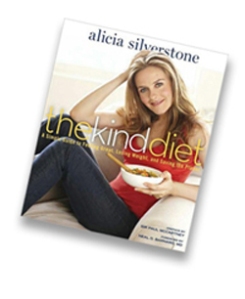 Alicia Silverstone published “The Kind Diet” and launched the “The Kind Life” website in 2011 to promote a plant-based diet and a conservation attitude. Her approach to parenting includes no vaccines, no commercial diapers, and no meat for her kids. Alicia told The New Potato, “Eating “kind” is about being really, really good to yourself via the foods you put into your body. A plant-based diet filled with delicious whole foods (mother nature’s little miracles) will give you tons of energy, mental clarity, gorgeous skin and a zest for life. The bonus? This kindness also extends to the earth itself; a plant-based diet is much lighter on the planet.”
Alicia Silverstone published “The Kind Diet” and launched the “The Kind Life” website in 2011 to promote a plant-based diet and a conservation attitude. Her approach to parenting includes no vaccines, no commercial diapers, and no meat for her kids. Alicia told The New Potato, “Eating “kind” is about being really, really good to yourself via the foods you put into your body. A plant-based diet filled with delicious whole foods (mother nature’s little miracles) will give you tons of energy, mental clarity, gorgeous skin and a zest for life. The bonus? This kindness also extends to the earth itself; a plant-based diet is much lighter on the planet.”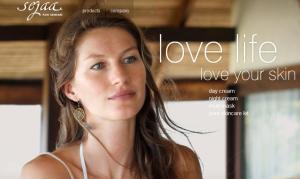 Super-model Giselle launched an all-natural, eco-friendly skin care line called Sejaa in 2010 to protect your skin’s natural radiance while also protecting the health and beauty of the environment. Gisele told Vogue: “I wanted to teach girls to love themselves and take care of their bodies. What is the first thing you see every morning? Your face! What do you put every day on your face? Cream! I have made the simplest, purest cream — an everyday cream — but it comes with an affirmation…. be grateful you are here, alive and healthy. “
Super-model Giselle launched an all-natural, eco-friendly skin care line called Sejaa in 2010 to protect your skin’s natural radiance while also protecting the health and beauty of the environment. Gisele told Vogue: “I wanted to teach girls to love themselves and take care of their bodies. What is the first thing you see every morning? Your face! What do you put every day on your face? Cream! I have made the simplest, purest cream — an everyday cream — but it comes with an affirmation…. be grateful you are here, alive and healthy. “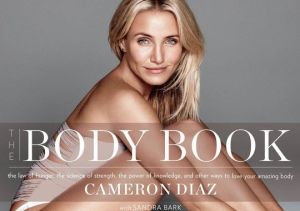 Cameron Diaz wrote #1 New York Times bestseller “The Body Book” in 2013 to share what she has learned about nutrition, exercise, and the mind/body connection. Cameron was motivated to write the book when she was 39 years old because she kept having conversations with girlfriends who were confused about their bodies. In this LA Times interview, Cameron explains how her book is different from other self-help books: “We should all be experts in our own bodies and how they function. I want people to be happy and healthy and productive, and you can’t tell them how to do that. They have to learn it themselves, so it all comes back to giving them the basics of how the body functions and letting them figure it out from there. I don’t give a diet or fitness plan. I want people to learn critical thinking to figure out their own plan. Or to be able to look at another plan and understand what parts are right for them and how to adapt it to fit their own needs.”
Cameron Diaz wrote #1 New York Times bestseller “The Body Book” in 2013 to share what she has learned about nutrition, exercise, and the mind/body connection. Cameron was motivated to write the book when she was 39 years old because she kept having conversations with girlfriends who were confused about their bodies. In this LA Times interview, Cameron explains how her book is different from other self-help books: “We should all be experts in our own bodies and how they function. I want people to be happy and healthy and productive, and you can’t tell them how to do that. They have to learn it themselves, so it all comes back to giving them the basics of how the body functions and letting them figure it out from there. I don’t give a diet or fitness plan. I want people to learn critical thinking to figure out their own plan. Or to be able to look at another plan and understand what parts are right for them and how to adapt it to fit their own needs.”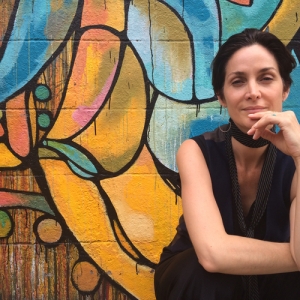 Last year, Carrie-Anne Moss, best known for her role of Trinity in The Matrix trilogy, launched Annapurna Living, a website that offers courses focused on meditation. It was her role as wife and mother that inspired her to create a community of women crafting lives that uplift each other. On her website, she says: “My desire is to live in a world where nourishment is valued. I believe a nourished family will lead to a nourished world. I believe life is beautiful and that our divine purpose in this world is to nurture the earth by respecting it and being grateful for what it provides us…My wish is to inspire others to create beautiful, honest and satisfying lives.”
Last year, Carrie-Anne Moss, best known for her role of Trinity in The Matrix trilogy, launched Annapurna Living, a website that offers courses focused on meditation. It was her role as wife and mother that inspired her to create a community of women crafting lives that uplift each other. On her website, she says: “My desire is to live in a world where nourishment is valued. I believe a nourished family will lead to a nourished world. I believe life is beautiful and that our divine purpose in this world is to nurture the earth by respecting it and being grateful for what it provides us…My wish is to inspire others to create beautiful, honest and satisfying lives.” After she woke up in a pool of her own blood, Arianna Huffington realized that it was time to re-define success and make a lifestyle change. In 2014, she published the best-selling book “Thrive” and followed it up with a digital course on Oprah.com in 2015 to teach practical ways to meditate, get more sleep, and create a digital detox plan. Arianna tells Darling Magazine: “Thrive was prompted by my painful wakeup call. … I had collapsed from exhaustion and lack of sleep. ..In terms of the traditional measures of success, which focus on money and power, I was very successful. But I was not living a successful life by any sane definition of success. I knew something had to radically change. I could not go on that way. The title of the book reflects my belief that our goal, as individuals and as a society, should be not just to succeed but to thrive.”
After she woke up in a pool of her own blood, Arianna Huffington realized that it was time to re-define success and make a lifestyle change. In 2014, she published the best-selling book “Thrive” and followed it up with a digital course on Oprah.com in 2015 to teach practical ways to meditate, get more sleep, and create a digital detox plan. Arianna tells Darling Magazine: “Thrive was prompted by my painful wakeup call. … I had collapsed from exhaustion and lack of sleep. ..In terms of the traditional measures of success, which focus on money and power, I was very successful. But I was not living a successful life by any sane definition of success. I knew something had to radically change. I could not go on that way. The title of the book reflects my belief that our goal, as individuals and as a society, should be not just to succeed but to thrive.” Alanis Morisette has been on a path of personal growth since her 1995 album, Jagged-little pill. She began a spiritual search to answer the big life questions such as “why am I here?” after she realized that material success did not cure her problems or her loneliness. She studied with many teachers and used mediation, prayer and music to find happiness and balance. In a SoulSunday Oprah interview, Alanis says: “I think happiness is a state, and it’s a temporary state. So, if we’re chasing a temporary state, we’re setting ourselves up to fail.…[Emotions are] like boats to me, and my suffering is dependent upon how quickly I jump into the boat and follow that stream. But if I sit back and watch it, there’s some relief…I wouldn’t call it ‘happiness.’ I would call it ‘the bliss or the joy of consciousness.” If you want to try her approach to happiness, Alanis and friends are hosting a wellness workshop next month in Big Sur, California titled “Hurtling Toward Wholeness.”
Alanis Morisette has been on a path of personal growth since her 1995 album, Jagged-little pill. She began a spiritual search to answer the big life questions such as “why am I here?” after she realized that material success did not cure her problems or her loneliness. She studied with many teachers and used mediation, prayer and music to find happiness and balance. In a SoulSunday Oprah interview, Alanis says: “I think happiness is a state, and it’s a temporary state. So, if we’re chasing a temporary state, we’re setting ourselves up to fail.…[Emotions are] like boats to me, and my suffering is dependent upon how quickly I jump into the boat and follow that stream. But if I sit back and watch it, there’s some relief…I wouldn’t call it ‘happiness.’ I would call it ‘the bliss or the joy of consciousness.” If you want to try her approach to happiness, Alanis and friends are hosting a wellness workshop next month in Big Sur, California titled “Hurtling Toward Wholeness.” Michelle Obama has been busy bringing wellness to the White House for the past seven years. In 2009, she planted a garden on the South Lawn and later wrote about her experience of growing fresh vegetables, fruit, and herbs in “American Grown.” The following year, she launched Let’s Move!, a nationwide initiative to make kids more active and bring healthier food into schools and communities. Michelle told ESPN that she lives a healthy life not only for herself, but also for her daughters:
Michelle Obama has been busy bringing wellness to the White House for the past seven years. In 2009, she planted a garden on the South Lawn and later wrote about her experience of growing fresh vegetables, fruit, and herbs in “American Grown.” The following year, she launched Let’s Move!, a nationwide initiative to make kids more active and bring healthier food into schools and communities. Michelle told ESPN that she lives a healthy life not only for herself, but also for her daughters: Long before she was famous, Eva Longoria was a personal trainer. She received her degree in Kinesiology from Texas A&M and uses everything she’s learned to stay lean and toned. She is also co-founder of Eva’s Heroes which is an organization dedicated to enriching the lives of young adults with special needs. She recognizes the importance of not only being physically fit but also having a healthy outlook. She told Health Magazine:
Long before she was famous, Eva Longoria was a personal trainer. She received her degree in Kinesiology from Texas A&M and uses everything she’s learned to stay lean and toned. She is also co-founder of Eva’s Heroes which is an organization dedicated to enriching the lives of young adults with special needs. She recognizes the importance of not only being physically fit but also having a healthy outlook. She told Health Magazine:

